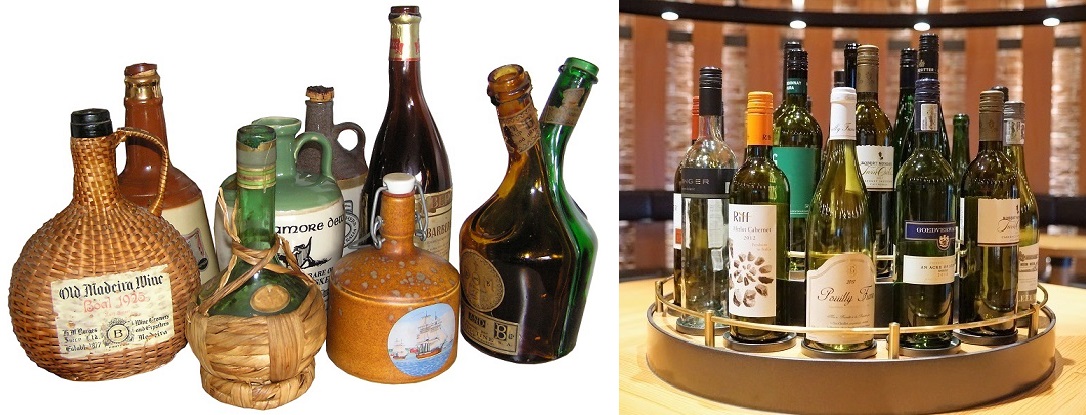The oldest finds of artificially produced glass in the form of glass beads date back to around 3500 BC from Egyptian royal tombs. Around 1500 BC, the first hollow glasses were produced in Egypt and in the Mesopotamian region and wine glasses were already being used. At that time, the glass was heated to about 900 °C, it was then in a viscous state and was wrapped around solid sand or clay cores and modelled. The fragility prevented glass from being used for larger containers and thus for transport. Around 200 BC, the invention of the glassmaker's pipe (glass blowing) and the glass melting furnace by the Phoenicians in what is now Syria fundamentally revolutionised glass production.

Determining the age
The Romans first produced window glass in the 1st century AD. They were also already making bottles for wine, but these were rarely used for storage due to their fragility. Clay vessels such as amphorae were still used for this purpose. The oldest wine bottle in the world with contents is on display in a museum in Speyer. It was found in a Roman grave and dates from the 4th century A.D. Incidentally, the age of glass can be determined by means of ion beam analysis. This can be used to detect manipulations and wine adulterations when selling old and expensive vintages. The London-based Antique Wine Company offers a service in this regard.

Use of wine bottles
From the 14th century onwards, luxury glass produced in Venice was exported worldwide. Glass was an absolute luxury item and drinking glasses made of silver were considered ordinary. In Florence, straw-wrapped bottles were already being used to transport wine, but glass was still far too fragile. For the most part, wooden barrels or containers made of other materials continued to be used for this purpose. It was not until the beginning of the 17th century that more resistant bottles could be produced in England due to coal-fired ovens and the resulting high heat. It was here that the production of lead crystal was discovered in 1675. Now bottles of various shapes and sizes were produced industrially. Today, glass containers of 25 to 65 litres are used as an alternative to small wooden barrels for ageing and storing wine.

Special glass for wine bottles
A dark bottle colour prevents the negative influence of UV light, which causes the wine defect Käseln (light taste). By adding vanadium pentaoxide to the molten glass, however, white glass bottles also become impermeable to UV light. Light glass is increasingly being used for the production of bottles. In viticulture, this is of great importance in connection with environmental protection in terms of sustainability. The production of glass, which is about a third lighter, can save an enormous amount of energy and greatly reduce CO2 emissions. However, lightweight glass is just as stable and strong as conventional glass. See also the section on bottles, glass corks and wine vessels.
Old bottle formats (top left): Last Bottle
Horse-foot Schlegel bottle (middle and top right): © AG MINIFOSSI - Schopfheim
Carafe: By Pearson Scott Foresman, Public domain, Link
Wine glasses: Riedel
various bottles: by Beverly Buckley on Pixabay
Bottles on plateau: by photosforyou on Pixabay
Voices of our members

For my many years of work as an editor with a wine and culinary focus, I always like to inform myself about special questions at Wine lexicon. Spontaneous reading and following links often leads to exciting discoveries in the wide world of wine.
Dr. Christa Hanten
Fachjournalistin, Lektorin und Verkosterin, Wien